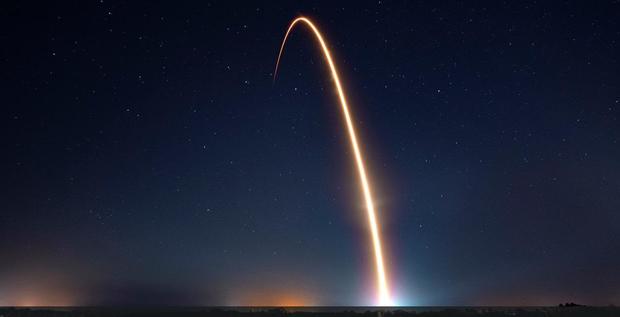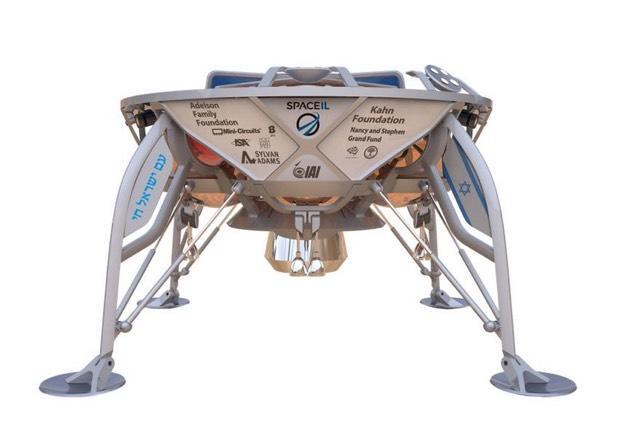SpaceX launches privately funded Israeli moon lander, Indonesian comsat
A SpaceX Falcon 9 rocket streaked away from Cape Canaveral on Thursday evening, boosting an Indonesian communications satellite into orbit and, along with it, a small Israeli spacecraft that will attempt the first privately-funded, non-superpower moon landing in April.
If successful, the $100 million mission will put Israel in an exclusive club, joining the United States, the Soviet Union/Russia and China as only the fourth nation in space history to pull off a powered landing on the moon.
"This is going to be the first private interplanetary mission that's going to go to the moon. This is a big milestone," said Yonatan Winetraub, co-founder of SpaceIL, the non-profit that is promoting the mission to boost STEM education initiatives across Israel.
"This is going to be the first time that it's not going to be a superpower that's going to go to the moon. This is a huge step for Israel."
SpaceX test fired the Falcon 9's first stage engines Monday night, clearing the way for liftoff from pad 40 at the Cape Canaveral Air Force Station. And right on time, at 8:45 p.m. EST (GMT-5) Thursday, the rocket's nine first-stage engines thundered to life again and the Falcon 9 shot away from its firing stand atop 1.7 million pounds of thrust.
The first stage shut down and fell away two minutes and 40 seconds after liftoff. While the second stage continued the climb to orbit, the first stage, making its third flight, plunged back toward a landing on a SpaceX droneship, the "Of Course I Still Love You," stationed east of Cape Canaveral.
Considered an especially challenging return because of the Falcon 9's trajectory, the booster restarted its central engine as it neared the recovery ship, extended four landing legs and settled to a pinpoint touchdown. SpaceX's first stage landing record now stands at 34 successful touchdowns, 22 on droneships and 12 on land.
This was SpaceX's second mission so far this year, it's first from Cape Canaveral since December and the company's 68th Falcon 9 launch overall, its 69th counting the maiden flight of a three-core Falcon Heavy in February 2018.
While the Israeli Beresheet — "in the beginning" in Hebrew — moon lander sparked widespread interest in the mission, the primary goal of the flight was to boost a powerful Indonesian communications satellite into orbit for PT Pasifik Satelit Nusantara. Known as Nusantara Satu, the relay station will provide a broad range of telecommunications services across the Indonesian archipelago.
The comsat also carried a small U.S. Air Force Research Laboratory satellite, known as S5, that will be released to operate on its own in a circular orbit 22,300 miles above the equator. The experimental satellite will use an optical sensor to monitor the environment at that altitude where scores of communications stations are stationed. The goal is to improve "space situational awareness."
But the clear star of the show is the Beresheet moon lander.
Designed by SpaceIL and built by Israel Aerospace Industries for the since-canceled Google Lunar X-prize competition, Beresheet is the first Israeli spacecraft designed to visit the moon or any other world. The goal is to spur interest in STEM careers among students in Israel.
"Israel is a very small country, as small as New Jersey, and we're shooting for the moon," said Yigal Harel, SpaceIL manager of Beresheet program. "It's the first time a small country has aimed to reach the moon and land safely. We are the first non-governmental mission to the moon, and we're the first ever moon mission to use a commercial launch."
The Falcon 9 launch for Beresheet and the Air Force S5 satellite was arranged by Seattle-based Spaceflight, a company that has pioneered "rideshare" launch opportunities for small satellites that do not require a dedicated rocket. For Wednesday's launch, Spaceflight negotiated rideshares through SSL (formerly Space Systems/Loral), builder of the PSN 6 satellite.
Beresheet separated from the Falcon 9's second stage about 33 minutes after launch, released into a highly elliptical orbit with a high point, or apogee, of about 37,000 miles. That's the "transfer" orbit required by Nusantara Satu, which will use on-board thrusters to reach its operational 22,300-mile-high circular orbit above Indonesia.
Beresheet, meanwhile, will use its thrusters, repeatedly firing at the low point of the ellipse, to raise the apogee step by step until the spacecraft intercepts the moon's orbit and is captured by lunar gravity April 4.
Landing on the moon's Mare Serenitatis is targeted for April 11. During the final descent to the surface, a magnetometer will measure the local magnetic field before the main engine shuts down at an altitude of about 16 feet. From there, the spacecraft will free fall to the surface.
Beresheet is equipped with a high-resolution camera to capture panoramic views of the landing site to help scientists better understand the area. The spacecraft also carries a small "time capsule" loaded with cultural artifacts, including a copy of the Bible engraved on a coin-size disk.
"We have a vision to show off Israel's best qualities to the entire world," said Sylvan Adams, a Canadian-Israeli businessman and philanthropist who contributed to the SpaceIL project and is an enthusiastic, if unofficial, "ambassador."
Payloads aside, the Falcon 9 launching was of vital importance to NASA, helping clear the way for the March 2 launch of a SpaceX Crew Dragon astronaut ferry ship on an unpiloted test flight to the International Space Station. NASA plans to hold a flight readiness review Friday.








